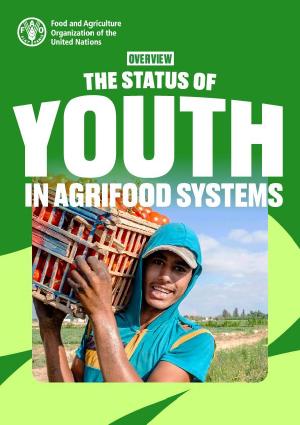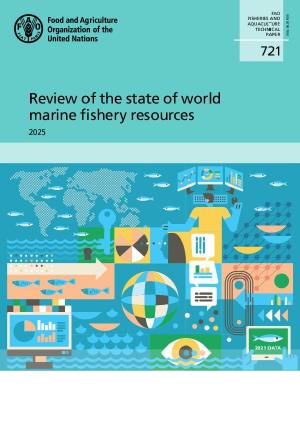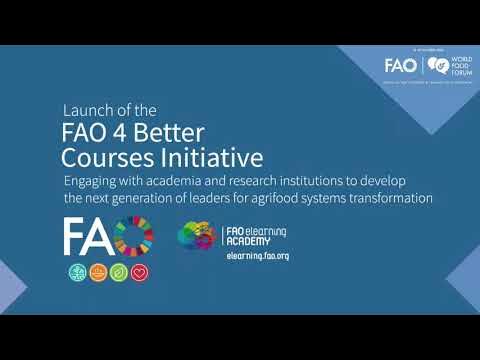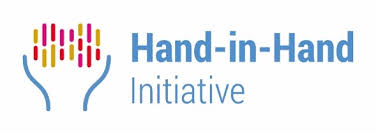FAO’s Global Forest Resources Assessment 2025
- 25 Oct 2025
In News:
India has moved up to the 9th position globally in total forest area, according to the Global Forest Resources Assessment (GFRA) 2025, released by the Food and Agriculture Organization (FAO) in Bali. The report reflects India’s steady progress in forest conservation, afforestation, and sustainable land management.
About the Global Forest Resources Assessment (GFRA)
- Published by: Food and Agriculture Organization (FAO) of the United Nations
- Frequency: Every five years
- Objective: To provide comprehensive data on the world’s forests, covering their extent, condition, management, and use.
- 2025 Theme: Strengthening forest resilience for sustainable development.
Global Findings (GFRA 2025)
- Total global forest cover:4.14 billion hectares, accounting for 32% of the Earth’s land area, equivalent to 0.5 hectares per person.
- Top 10 countries by forest area:Russia, Brazil, Canada, USA, China, Democratic Republic of the Congo, Australia, Indonesia, India, and Peru.
- Deforestation trends:Global deforestation has slowed in the past decade, but the world continues to lose about 10.9 million hectares of forest annually (2015–2025)—a rate still considered alarming.
India’s Forest Status and Achievements
- Total forest cover:72.7 million hectares, accounting for about 2% of global forest area.
- Global ranking:
- 9th in total forest area (up from 10th position in the previous assessment).
- 3rd in annual forest area gain, after China and Russia, highlighting successful afforestation initiatives.
- Agroforestry Leadership:India and Indonesia together contribute over 70% of the world’s agroforestry areas, reflecting strong integration of trees in farmlands.
Significance of India’s Achievement
- Climate Change Mitigation:Expanding forest area enhances carbon sequestration, supporting India’s Nationally Determined Contributions (NDCs) under the Paris Agreement.
- Biodiversity Conservation:Forests serve as habitats for India’s rich flora and fauna, aiding ecosystem balance and wildlife protection.
- Livelihood and Socioeconomic Support:Around 275 million people in India depend on forests for subsistence, employment, and traditional livelihoods.
- Land and Water Security:Forests play a crucial role in soil conservation, groundwater recharge, and regulating hydrological cycles, particularly in fragile ecosystems.
- Global Commitments:Aligns with India’s obligations under the UN Decade on Ecosystem Restoration (2021–2030) and Sustainable Development Goal 15 (Life on Land).
Government Initiatives Driving Forest Growth
- Ek Ped MaaKe Naam Campaign:A nationwide movement encouraging citizens to plant trees in honor of their mothers, fostering personal and cultural ties to environmental conservation.
- National Mission for a Green India (GIM):A key component of the National Action Plan on Climate Change (NAPCC), targeting increased forest cover and improved forest quality to enhance carbon sinks.
- Compensatory Afforestation Fund Act, 2016 (CAMPA):Mandates compensatory levies for diversion of forest land for non-forest purposes and channels these funds into afforestation and eco-restoration activities.
- Eco-Sensitive Zones (ESZs):Buffer zones around Protected Areas, National Parks, and Wildlife Sanctuaries to limit harmful anthropogenic activities and protect ecological integrity.
- Joint Forest Management (JFM):Promotes community participation in forest conservation and regeneration by forming partnerships between local communities and forest departments.
Status of Youth in Agrifood Systems

- 06 Jul 2025
In News:
The Food and Agriculture Organization (FAO) has released the “Status of Youth in Agrifood Systems” report, emphasizing that youth empowerment in agriculture could significantly reduce global unemployment and enhance food security, with the potential to boost global GDP by 1.4% (approx. $1.5 trillion).
Key Insights from the Report:
Declining Youth Engagement in Agriculture:
- The share of youth employed in agrifood systems has dropped from 54% in 2005 to 44%, even though many low-income countries remain heavily dependent on youth labour in agriculture.
Youth NEET Crisis:
- Over 20% of global youth (ages 15–24) are Not in Employment, Education, or Training (NEET).
- Young women are twice as likely to fall into this category compared to men.
- Addressing NEET status, particularly among those aged 20–24, could raise global output, with 45% of potential gains stemming from agrifood-related employment.
Urban-Rural Divide:
- 54% of youth now reside in urban areas, while only 5% of rural youth participate in industrial agrifood systems — posing challenges for future agricultural labour availability.
Climate Vulnerability:
- Around 395 million rural youth live in regions projected to experience reduced agricultural productivity due to climate change and extreme weather events.
Rising Food Insecurity Among Youth:
- Youth facing moderate to severe food insecurity has grown from 16.7% (2014) to 24.4% (2023), with severe impacts in Africa and conflict-affected areas.
FAO’s Strategic Recommendations:
Inquire More:
- Close data gaps related to youth roles in agrifood systems.
- Promote evidence-based, youth-responsive policies.
Include More:
- Ensure youth participation in decision-making at local, national, and international levels.
- Foster inclusive governance for both rural and urban youth.
Invest More:
- Job Creation: Facilitate decent employment opportunities on farms and in agrifood value chains.
- System Modernization: Invest in rural infrastructure, digital tools, and agricultural innovation.
- Resource Access: Improve youth access to land, credit, markets, training, and technology.
- Safe Migration: Develop regulated migration pathways for youth involved in agriculture and related sectors.
State of World Marine Fishery Resources 2025

- 14 Jun 2025
In News:
The Food and Agriculture Organization’s (FAO) 2025 Report on the State of World Marine Fishery Resources, released during the UN Ocean Conference (UNOC3) in Nice, France, offers a comprehensive assessment of global fish stock sustainability, regional disparities, and governance challenges.
Key Findings:
- Global Sustainability: 64.5% of marine fishery stocks are fished within biologically sustainable levels, indicating modest improvement. However, 35.5% remain overexploited.
- Deep-Sea Species Vulnerability: Only 29% of deep-sea species are sustainably harvested, largely due to biological traits like slow growth, delayed maturity, and low reproductive rates. These characteristics impair recovery from overfishing.
- Migratory Shark Concerns: Of the 23 shark stocks assessed, 43.5% are overfished, especially in the tropical Indo-Pacific where they frequently become bycatch in tuna fisheries.
- Tuna Success Story: 87% of evaluated tuna and tuna-like species are sustainably fished, a result of effective regulation by Regional Fisheries Management Organizations (RFMOs).
- Regional Disparities: The northeast and southwest Pacific show high sustainability levels, while areas such as the Mediterranean and Black Sea lag, with only 35.1% of stocks sustainably managed.
- Data Gaps: Despite high reported sustainability (72.7%) in the eastern Indian Ocean, concerns remain due to insufficient species-specific stock assessments.
Governance and Policy Challenges:
- Illegal, Unreported and Unregulated (IUU) Fishing: Continues to threaten stock sustainability. IUU encompasses:
- Illegal: Breaches of domestic or international laws.
- Unreported: Failure to report or misreport catches.
- Unregulated: Conducted by vessels operating beyond jurisdictional authority, undermining conservation efforts.
- Subsidy Prohibitions (WTO Agreement):
- Bans financial support to vessels engaging in IUU fishing.
- Restricts subsidies for overfished stocks unless recovery measures are implemented.
- Prohibits aid for fishing in unregulated high seas zones.
Critical Analysis:
Positives:
- The rise in sustainable stocks signifies improved management awareness, particularly in regulated regions like the Pacific.
- Tuna fisheries demonstrate successful use of scientific tools—catch reporting and onboard observers—under RFMOs.
- The global survey included over 600 experts across 90 nations, lending credibility and robustness.
Negatives:
- Deep-sea stocks remain acutely overfished and biologically vulnerable.
- Shark species, integral to marine food webs, continue to suffer from bycatch and poor regulatory coverage.
- Monitoring shortfalls in Southeast Asia and African coasts prevent precise biomass estimation and conservation action.
- Weaker implementation and unregulated artisanal practices challenge sustainability in Mediterranean and Black Sea regions.
Recommendations for Sustainable Fisheries Governance:
- Empower RFMOs with real-time monitoring systems, electronic catch reporting, and observer programs.
- Adopt Ecosystem-Based Approaches that integrate climate resilience and biodiversity objectives.
- Strengthen Data Infrastructure in data-deficient regions with support from international bodies like the FAO and World Bank.
- Curtail Harmful Subsidies as per WTO protocols to reduce economic incentives driving overfishing.
- Promote Community Participation through co-management strategies and the development of Marine Protected Areas (MPAs).
Food and Agriculture Organization (FAO)

- 08 Apr 2025
In News:
The Food and Agriculture Organization (FAO) has launched two major global initiatives to advance inclusive and sustainable agrifood systems:
- “Four Betters Courses” Initiative – To revolutionize agrifood systems education
- “Commit to Grow Equality” Initiative – To bridge the gender gap in agrifood sectors
1. Four Betters Courses Initiative
- Launched: October 2024 during the World Food Forum
- Objective: To integrate FAO’s expertise into global agrifood systems education through partnerships with universities and academic networks.
- Alignment: Anchored in the FAO Strategic Framework 2022–2031
Core Philosophy – The “Four Betters” Approach:
- Better Production – Promote efficient, inclusive, and resilient food systems
- Better Nutrition – Ensure access to safe, nutritious, and affordable diets
- Better Environment – Address climate change and protect ecosystems
- Better Life – Improve rural livelihoods and reduce inequalities
- Delivery Platform: Implemented through the FAO eLearning Academy, which provides over 600 multilingual, certified courses.
2. Commit to Grow Equality (CGE) Initiative
- Launched: 2024 on the platform of the United Nations General Assembly (UNGA)
- Objective: To narrow the gender gap in agrifood systems and enhance women’s empowerment, especially in rural areas.
Key Highlights:
- Aims to benefit over 54 million women worldwide
- Mobilizes $1 billion in investments toward gender-responsive agrifood initiatives
- Provides strategic tools for tracking gender equality outcomes in public and private sectors
- Promotes gender-aligned national agricultural policies
- Facilitates evidence-based policymaking and fosters collaboration across governments, NGOs, and the private sector
FAO’s 3rd Report on the State of the World’s Plant Genetic Resources for Food and Agriculture (2025)
- 27 Mar 2025
In News:
The diversity of plant genetic resources for food and agriculture was under growing threat as despite 6,000 plant species cultivated, 60 per cent of the global crop production was alarmingly dependent on just nine crops, an important report by the United Nations Food and Agriculture Organization (FAO).
Key Highlights:
- Released by:Food and Agriculture Organization (FAO), under the Commission on Genetic Resources for Food and Agriculture (CGRFA-20).
- Crop Dependency & Diversity:
- 60% of global crop production is dependent on just 9 crops:Sugarcane, Maize, Rice, Wheat, Potatoes, Soybeans, Oil Palm Fruit, Sugar Beet, Cassava.
- Though 6,000 plant species are cultivated globally, there is a rising loss of genetic diversity, increasing vulnerability to climate shocks and food insecurity.
- Farmers’ Varieties / Landraces (FV/LRs):
- Traditional crop varieties adapted to local conditions, offering greater resilience to climate, pests, and diseases.
- Globally, 6% of FV/LRs are threatened; this figure exceeds 18% in some regions like Southern Africa, the Caribbean, and Western Asia.
- In India, over 50% of FV/LRs across five agro-ecological zones are at risk of extinction.
- Conservation Efforts
- In-situ (on-farm): Around 35 million hectares in 51 countries are under cultivation with FV/LRs.
- 42% of plant taxa are threatened at species or varietal level.
- Ex-situ (off-farm):
- Over 5.9 million accessions preserved globally.
- Many stored in the Svalbard Global Seed Vault.
- Conservation is constrained by funding, political support, infrastructure, and skilled personnel shortages.
- In-situ (on-farm): Around 35 million hectares in 51 countries are under cultivation with FV/LRs.
India-Specific Initiative
- Seed Hub Initiative (2016) by the Ministry of Agriculture:
- Aimed at promoting high-yielding varieties (HYVs) of pulses.
- Resulted in increased production from 14.76 million tonnes (2007–08) to 24.42 million tonnes (2020–21).
Impact of Climate Change
- Increasing frequency of extreme weather events threatens crop diversity.
- Countries lack mechanisms to assess disaster impacts on crop genetics.
- Post-disaster germplasm distribution often suffers due to poor seed adaptation to local agro-climatic and cultural contexts.
Key Challenges
- Genetic erosion due to monoculture, urbanization, and climate stress.
- Underfunded gene banks and weak institutional capacity.
- Lack of trained plant genetic experts and documentation gaps.
- Limited access to locally adapted seeds, especially post-disaster.
Way Forward
- Integrate in-situ and ex-situ conservation with community participation.
- Enhance funding and explore public-private partnerships.
- Build capacity in taxonomy, plant breeding, and genebank management.
- Promote participatory breeding with farmers and Indigenous communities.
- Strengthen policy support for crop diversification and climate-resilient agriculture.
About CGRFA
- Established: 1983 by FAO.
- Mandate: Only intergovernmental body focusing on sustainable use of agricultural biodiversity.
- Membership: 179 countries + European Union.
- Major Achievement:Instrumental in adoption of International Treaty on Plant Genetic Resources for Food and Agriculture (ITPGRFA), 2001.
Hand-in-Hand Investment Forum

- 18 Oct 2024
In News:
Recently, the Director-General of the Food and Agriculture Organization (FAO) inaugurated the third Hand-in-Hand Investment Forum.
Purpose and Goals
- Objective: To accelerate the transformation of agrifood systems to address global challenges:
- Eradicate poverty (SDG 1)
- End hunger and malnutrition (SDG 2)
- Reduce inequalities (SDG 10)
- Target: Focuses on improving the lives of poor and vulnerable populations by:
- Raising incomes
- Enhancing nutritional status and overall well-being
- Strengthening resilience to climate change
Key Features of the HIH Initiative
- Launched: 2019 as a flagship program by the Food and Agriculture Organization (FAO).
- Primary Focus Areas:
- Geospatial and analytics-driven approach: Utilizes advanced geospatial modeling, biophysical, socio-economic data, and analytics to identify key territories for intervention.
- Market-based transformation: Aims to create sustainable, market-based solutions for agricultural development and food systems transformation.
- Value Chain Development: Focus on developing value chains for priority commodities to boost incomes and food security.
- Agro-Industry Building: Strengthening agro-industries and introducing efficient water management and precision agriculture systems.
- Digitalization: Introducing digital services for better agricultural planning and productivity.
Key Areas of Intervention
- Agricultural Transformation: Identifying territories with the highest potential for transformation.
- Sustainable Management: Focus on sustainable practices in forestry, fisheries, and land management.
- Climate Resilience: Building systems to mitigate the effects of climate change and reduce vulnerability.
- Food Loss Reduction: Addressing food losses and waste across agricultural value chains.
Global Participation
- Member Countries: 72 countries have joined the initiative, collaborating on shared goals for agrifood systems transformation.
The Hand-in-Hand Investment Forum
- Purpose: A platform to mobilize investments for the successful implementation of agrifood transformation programs under the HIH initiative.
- Event: The third Hand-in-Hand Investment Forum was recently opened by the FAO Director-General to discuss challenges and solutions for global agrifood system transformation.
About the Food and Agriculture Organization (FAO)
- Established: October 1945, it is the oldest permanent specialized agency of the United Nations.
- Mandate:
- Improve nutrition.
- Increase agricultural productivity.
- Raise the standard of living in rural areas.
- Contribute to global economic growth.
- Headquarters: Rome, Italy.
- Members: 194 Member States and the European Union.
Key Role of FAO:
- FAO leads international efforts to combat hunger and malnutrition worldwide.
- Supports member countries in implementing agricultural and food security programs.
Strategic Importance
- The Hand-in-Hand Initiative is integral to FAO’s mandate, focusing on countries with the most pressing needs due to poverty, hunger, or crises (natural or man-made).
- It enhances cooperation among nations to tackle global food security challenges, with a particular emphasis on countries with limited national capacities.
State of Food Security and Nutrition in the World-2023 (FAO)
- 31 Aug 2023
What is the News ?
A recently published report, ‘State of Food Security and Nutrition in the World’ (SOFI) 2023, shows that the cost of a healthy diet has increased in India in recent years, but it is still lowest among the BRICS countries (including the newly added six countries) and India’s neighbours.
Facts About:
- The ‘State of Food Security and Nutrition in the World’ (SOFI) 2023 report prepared by FAO and United States agencies has been released with the theme of “Urbanisation, agrifood systems transformation, and healthy diets across the rural-urban continuum”.
- According to a UN agency report 74% of people in India can’t afford a healthy diet because of increasing costs.
‘State of Food Security and Nutrition in the World’ (SOFI) 2023 :-
The report is published by the partnership of Food and Agriculture Organisation(FAO) of the United Nations with the United States agencies i.e International Fund for Agricultural Development (IFAD), United Nations Children’s Fund (UNICEF), World Food Programme (WFP) and World Health Organisation (WHO).
The aim of the report is
- ending hunger
- achieving food security
- improving nutrition
- to provide an in-depth analysis for achieving this goal in the context of the SDG.
FAO:-Each year, FAO’s most deeply scrutinised report presents the leading numbers of undernourished people worldwide, while advocating for strategies against hunger and malnutrition.
SOFI 2023 related to India:-
PPP report:-
- The concept of PPP is 1ppp dollar in the United States should be able to buy the same amount of goods in either India or Brazil or in other countries.
- xPPP dollar per day means how much would it cost to buy a very simple healthy diet in every country.
- According to this data India compared to its other countries or other regional countries of the world itself has the lowest PPP dollar for a healthy diet.
According to another data which shows the share of the population that is unable to afford a healthy diet in 2021, for instance 74% of the Indian population cannot afford a healthy diet and the fourth highest share in the country itself .
So when it comes to afford a healthy diet, India comes fourth.
Because of stagnation, poor income levels, General stagnation, people of India are not able to afford the cheapest healthy diet in the world.
According to Above two report
- India doesn’t have to spend too much to get a healthy diet.
- 74% of our population cannot afford a healthy diet.
Conclusion:-
The share of people able to afford such a healthy diet is still low: India is at the bottom of that list because income levels are stagnant or going down.
- For example, while in mumbai the cost of meals have risen by 65% in last 5 years wages and salaries have only risen by 28% to 37% , so it shows that prices are rising but our incomes are not rising therefore though India have the cheapest food in the world there is most of people of india can’t afford it.It is not about the can’t afford food it’s a about a nutritional healthy diet divided by FAO and the UN.
Source: https://www.fao.org/documents/card/en?details=cc3017en
